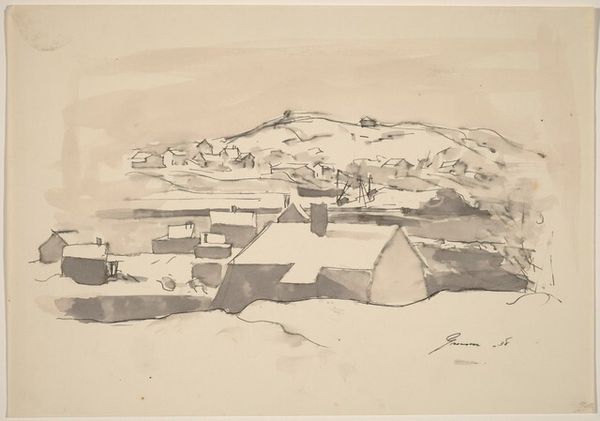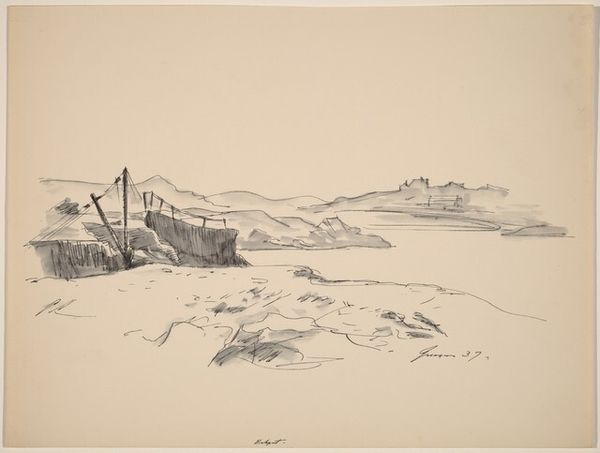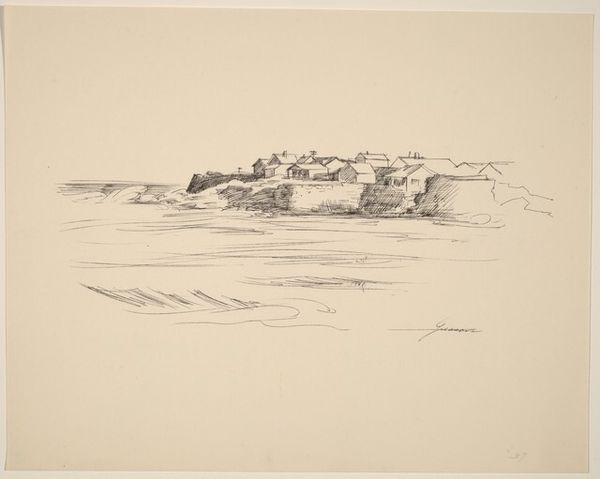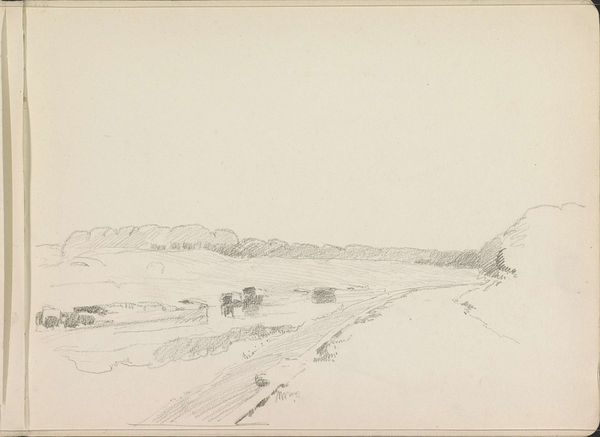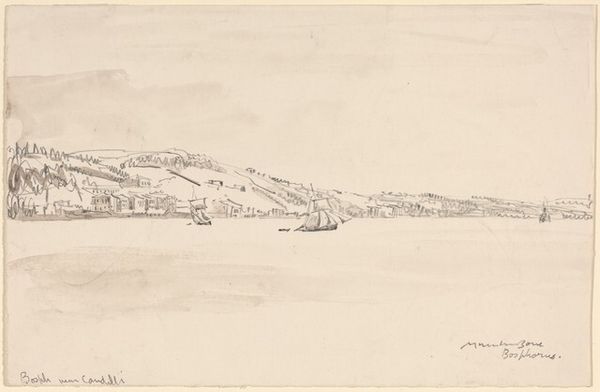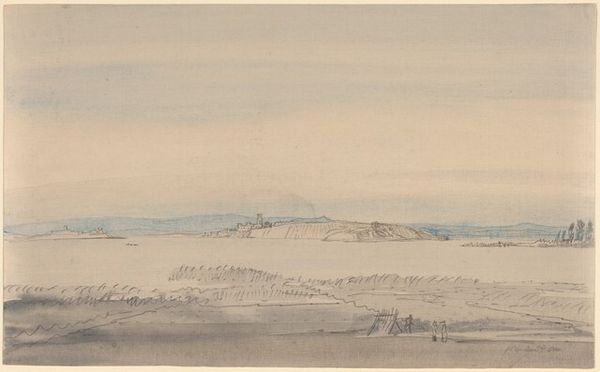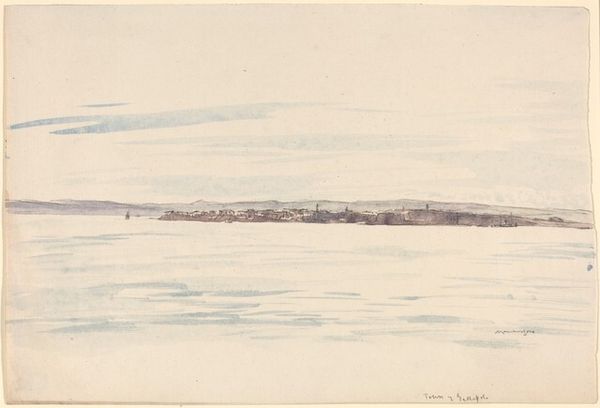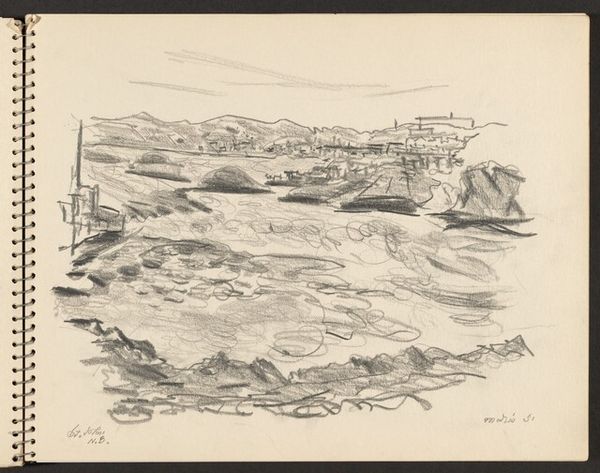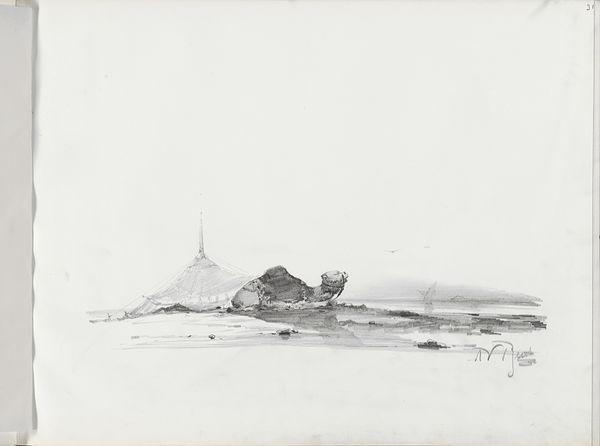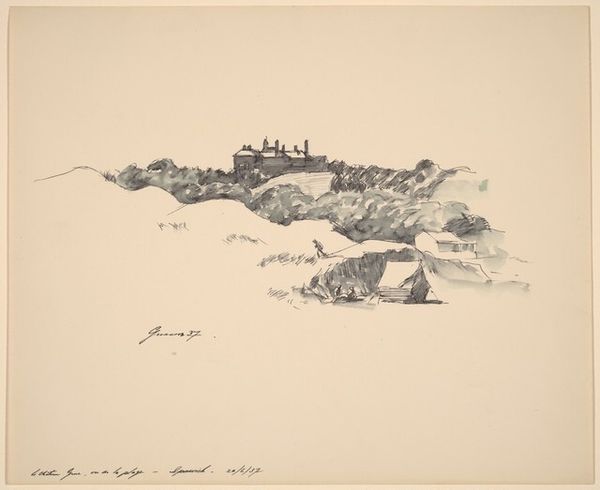
drawing, ink, pen
#
drawing
#
ink drawing
#
pen sketch
#
landscape
#
etching
#
figuration
#
ink
#
pen
#
modernism
Dimensions: overall: 21.9 x 28.9 cm (8 5/8 x 11 3/8 in.)
Copyright: National Gallery of Art: CC0 1.0
Art Historian: Welcome. We're standing before Donald Carlisle Greason's "Lighthouse, Rocky Coast," an ink and pen drawing from 1938. Greason was an interesting figure. While primarily known for realist paintings, this piece shows his explorations into more simplified forms. Artist: My first thought? Quietude. The grays and muted lines...it's like a hushed secret whispered by the sea. I love how minimal it is. Makes you feel solitary, almost delightfully lonely. Art Historian: That feeling of solitude resonates with the socio-political mood of the late 1930s, as America was still emerging from the Great Depression, isolationism was politically in favour, and another world war loomed on the horizon. Works like this were less about bombastic proclamations and more about quiet resilience, reflection. It speaks to an enduring spirit in a trying time. Artist: Definitely. And the texture – you can almost feel the roughness of those rocks under your hands. It is less of a factual lighthouse, but a vessel of mood, sketched out. The drawing isn’t precise, there’s a sense of fluidity and impermanence in the ink that lends itself to capturing something beyond mere geography. I am interested in the perspective also. Art Historian: And the perspective certainly plays a role. Greason is careful about how that lighthouse commands the scenery. In the context of American art history, we see such imagery evolving – the lighthouse moves away from pure representation towards being symbolic, perhaps hinting at guidance or the possibility of finding a safe harbour. Artist: To me, it also feels very personal. Like a memory caught on paper, fragile but persistent. Maybe the artist found solace in these views...a connection with nature in a world going mad? I see more than rocks and lighthouses here. Art Historian: Indeed. That intersection of the personal and political is exactly where art generates lasting power. We are lucky that these pieces are still here to connect us across decades. Artist: It makes me want to grab my sketchbook and find my own quiet corner of the coast. Art Historian: An apt response, I'd say. It reminds me of the ability of art to inspire beyond its immediate moment. It carries us into the future through each interaction.
Comments
No comments
Be the first to comment and join the conversation on the ultimate creative platform.
